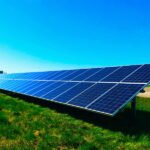Frame house construction technologies: pros and cons
Frame construction is becoming increasingly popular due to its numerous advantages. This technology originated in North America and Europe, and today it is actively used in many countries, including Russia and Ukraine. Frame houses are easy and quick to build, as well as the possibility of individual planning. Let’s consider the main features of frame construction, its advantages and disadvantages.
Basic technologies for the construction of frame houses
Classic frame The classic technology consists of creating a wooden frame for a house, consisting of posts, strapping and beams, to which panels for the walls, floor and roof are attached. The space between the posts is filled with insulation.
Frame-panel technology Here, ready-made factory panels (SIP panels) are used, which contain insulation and are immediately mounted on the construction site. This speeds up the construction process and increases the accuracy of assembly.
Metal frame Instead of a wooden frame, metal profiles are used, which makes the house more stable and durable. This type of technology is often used for industrial or multi-story buildings.
Advantages of frame houses
High construction speed Frame houses are built much faster than traditional brick or concrete houses. Due to the use of prefabricated elements and ease of assembly, a house can be built in a few months, and in the case of SIP panels – in a matter of weeks.
Efficiency Construction of a frame house requires less materials, which reduces the overall cost. Also, due to good thermal insulation, such houses require less heating costs, which reduces operating costs in the future.
Energy efficiency Frame houses have excellent thermal insulation due to the use of modern insulation. This reduces energy costs for heating in winter and for air conditioning in summer, which makes the house environmentally friendly and economical.
Flexibility of layout Frame technology allows you to freely choose the layout. The walls inside the house are not load-bearing, so they can be moved or removed, changing the space to the needs of the owner.
Lightweight construction The lightness of the frame reduces the requirements for the foundation, which is especially useful in areas with weak soil or high groundwater levels. It also reduces the cost of preparing the foundation.
Environmental friendliness Wooden frame houses use natural materials, which makes them more environmentally friendly. With proper processing, wood can last for decades and does not harm the environment.
Disadvantages of frame houses
Limited service life Although modern frame houses with proper care can last up to 50-100 years, they are still inferior in durability to traditional brick or concrete buildings, which can last for centuries.
Fire hazard Wood is a flammable material, which increases the risk of fire. Modern technologies offer special impregnations for wood that reduce this risk, but it is impossible to completely eliminate it.
Requirements for the quality of construction Poor installation of a frame house can lead to serious problems – from deformation of the structure to heat leakage and increased humidity in the house. Therefore, it is important to choose experienced specialists and proven materials.
Vulnerability to moisture and insects: Wooden structural elements can be exposed to moisture, which causes rotting, and can also attract insects (termites or wood-boring beetles). Therefore, high-quality treatment of materials with antiseptics and compliance with construction technologies are required.
Low sound insulation Despite good thermal insulation performance, frame houses may be inferior to traditional buildings in sound insulation. This is especially noticeable when using inexpensive or thin materials for wall and ceiling cladding.
Less thermal inertia Frame houses cool down quickly and heat up quickly. This means that when the heating is turned off, the temperature in the house can quickly drop, especially in winter. Unlike massive brick or concrete houses, which retain heat longer.
Conclusion
Frame houses have many advantages, among which are high construction speed, cost-effectiveness and energy efficiency. However, they require a careful approach to the choice of materials and technologies, as well as to the quality of work, in order to avoid problems with durability and protection from external factors. This type of construction is ideal for those looking for a quick and affordable alternative to traditional brick or concrete homes, and who are willing to invest in quality materials and professional installation.


